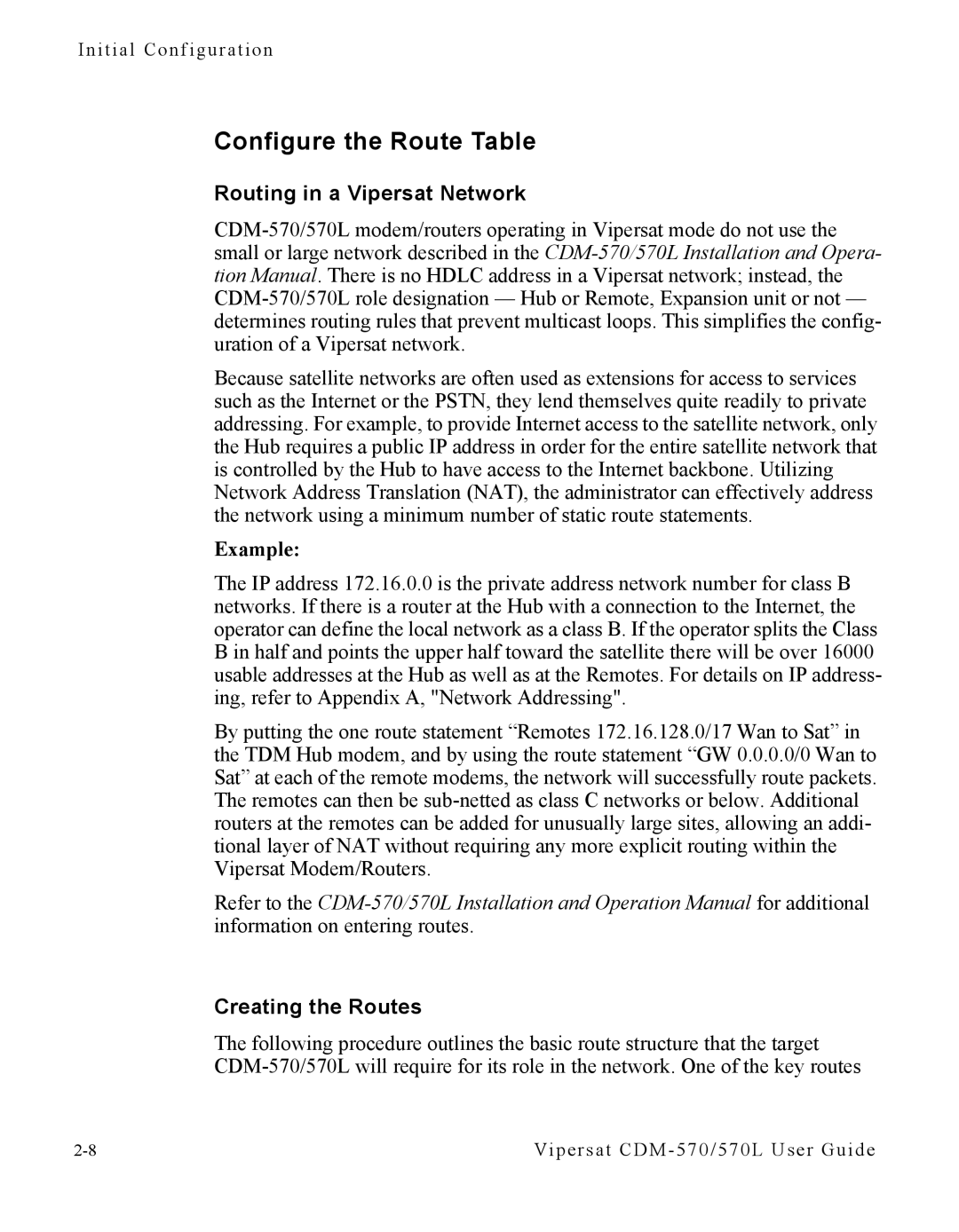Initial Configuration
Configure the Route Table
Routing in a Vipersat Network
Because satellite networks are often used as extensions for access to services such as the Internet or the PSTN, they lend themselves quite readily to private addressing. For example, to provide Internet access to the satellite network, only the Hub requires a public IP address in order for the entire satellite network that is controlled by the Hub to have access to the Internet backbone. Utilizing Network Address Translation (NAT), the administrator can effectively address the network using a minimum number of static route statements.
Example:
The IP address 172.16.0.0 is the private address network number for class B networks. If there is a router at the Hub with a connection to the Internet, the operator can define the local network as a class B. If the operator splits the Class B in half and points the upper half toward the satellite there will be over 16000 usable addresses at the Hub as well as at the Remotes. For details on IP address- ing, refer to Appendix A, "Network Addressing".
By putting the one route statement “Remotes 172.16.128.0/17 Wan to Sat” in the TDM Hub modem, and by using the route statement “GW 0.0.0.0/0 Wan to Sat” at each of the remote modems, the network will successfully route packets. The remotes can then be
Refer to the
Creating the Routes
The following procedure outlines the basic route structure that the target
Vipersat |
